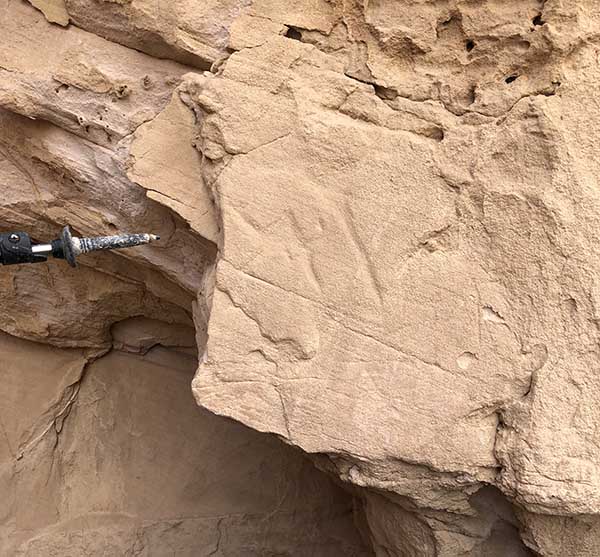CTV:ARCHAEOZOOLOGY
Ethnicity | The Domestic Camel | Social Status | Instructions for Fieldwork
The archaeozoological aspect of the Central Timna Valley (CTV) Project is spearheaded by Dr. Lidar Sapir-Hen (lidarsap@post.tau.ac.il) from the Institute of Archaeology of Tel Aviv University.
The on-going research of animal remains from Timna is based on the notion that food and the manner of its production and consumption are strongly related to social diversity and identity. The archaeozoological project is carried out in close cooperation with the excavation team (in the field and in the lab). Comprehensive retrieval of animal remains is achieved by hand picking as well as dry and wet sieving (using a 1mm mesh) with a close control of excavated context.
The research is currently focusing on these major themes: (1) Ethnic markers of societies engaged in copper production; (2) The introduction of the domestic camel to the southern Levant as evident in the archaeological record of the smelting sites at Timna and the Aravah; (3) The socioeconomic status of ancient metalworkers and miners.
Ethnicity
Who were the miners and metalworkers at Timna? Where they locals tribes, Edomites, Egyptians, Israelites? One of the most difficult questions in archaeology is identifying ethnic and cultural identities through the archaeological record, especially in periods without textual documentations. Archaeozoology, the study of animal bones left at the site, could help with this questions through the lens of ancient diets and food preparation practices.
The introduction of domestic camels as pack animals to the southern Levant

Rock drawing of a nursing she-camel from the vicinity of Timna (Photo by U. Avner).

Same petroglyph in 2018 (Photo by E. Ben-Yosef).
Data available until recently allowed only the general claim that camels as pack animals were introduced to the southern Levant at an early phase in the Iron Age (11th – 9th centuries BCE). Our recent study of faunal remains from Timna (Site 30 season 2009; Site 34, Season 2013), together with previous studies, enable us to pinpoint this event more precisely, as reflected in the well dated, stratified copper smelting sites of the Wadi Arabah. The new evidence indicates that the first significant appearance of camel at the Wadi Arabah was not earlier than the last third of the 10th century BCE, coinciding with the military campaign of Pharaoh Shoshenq I to the region.
More on the introduction of domestic camels to the southern Levant: Sapir-Hen, L. and E. Ben-Yosef (2013). The Introduction of Domestic Camels to the Southern Levant: Evidence from the Aravah Valley. Tel Aviv 40(2): 277-285.
The socioeconomic status of ancient metal workers
Season 2013 at Site 34 was the first stage of an ongoing study focusing on the socioeconomic status of different levels of specialization in metal production, including primary exploitation (mining and smelting) and specialized metallurgical workshops within settlement contexts.
Preliminary results from Season 2013 Site 34 (“slaves’ hill”):
The unique approach, of a comprehensive retrieval of animal remains under a tight control over context, allowed us to reconstruct social diversity on an intra-site level. The analysis of meat procurement method revealed two groups of people in the site: (1) workers engaged in direct smelting, and (2) workers engaged in auxiliary activities, including preparation of food. The first group was provided with the better meat, indicating that it represented highly skilled craftspersons that were treated as such by receiving selected portions of the higher quality meat. This find is in contrast to the common perception of furnace operators as a low class cheap labor force (or slaves).
More on social status of metalworkers and ethnicity: Sapir-Hen, L. and E. Ben-Yosef (2014). The socioeconomic status of Iron Age metalworkers: animal economy in the 'Slaves' Hill', Timna, Israel. Antiquity 88(341): 775-790.
Handling animal bones at the CTV Project
HAND PICKING
In the field:
- All bones (including bone fragments) should be collected and placed in plastic bags, with tags. The plastic bags should be punctured to create small holes.
- Bones found in (partial or complete) articulation should be excavated by an experienced team-member and in coordination with the archaezoologist.
In the camp:
- All bones should be gently washed with a tooth brush, just to remove the dirt.
- The bones should not be soaked in water for more than a few seconds.
- Washed bones should be placed in a basket along with their tag, and left to dry in an open shaded place.
- Bones should be re-packed only when they are completely dried.
Equipment: tooth brush, shaded area
WET SIEVING
In the field:
- Dirt-buckets destined for wet sieving should be lined with a mesh, and all the sediment should be placed in it, with a water proof tag. Please note that the mesh should not be folded, and should overlap the edges of the bucket so that it can be easily lifted out with the bucket’s contents, without spilling any.
In the camp:
- Sieving: The mesh is held securely and dipped in the water source. Make sure no mud is left it the mesh.
- picking: throwing out visible stones, the separation of pottery, bones and other finds. Separated bones should be left to dry in shade for 2 days before storage, with an identifying tag.
Equipment: wet-sieving mesh, water source, trays for sorting, small plastic bags for the sorted material.
Dr. Lidar Sapri-Hen (middle) working on dry sieving at the Slaves' Hill, Timna, February 2013
Wet sieving at the Timna Lake
